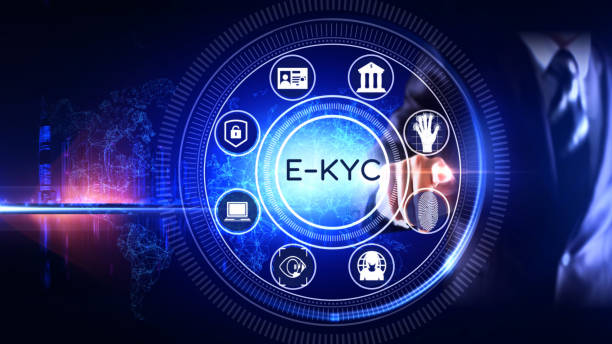Banks must stay ahead of the game as financial crimes continue to evolve. Enhanced due diligence (EDD) is a critical component of risk management in the banking sector. In this article, we’ll explore what EDD is, why it matters, and how banks can comply with EDD requirements.
What is EDD in Banking?
EDD in banking refers to an advanced level of due diligence that financial institutions conduct to identify, manage, and mitigate risks associated with high-risk customers. These may include politically exposed persons (PEPs), high-net-worth individuals (HNWIs), and businesses in high-risk sectors.
Why is Enhanced Due Diligence Important for Financial Institutions?
EDD is important for financial institutions because it helps them to identify potential risks before they occur. By conducting thorough due diligence, banks can prevent financial crimes such as money laundering, terrorist financing, and fraud. EDD also helps banks to comply with regulatory requirements and avoid hefty fines and reputational damage.
Here are some essential statistics on EDD for financial institutions:
- According to a study by LexisNexis Risk Solutions, the average financial institution loses 2.5% of its revenue to financial crime every year.
- The same study found that 84% of financial institutions expect the amount of money lost to financial crime to increase over the next three years.
- A survey by the Association of Certified Anti-Money Laundering Specialists (ACAMS) found that 90% of financial institutions believe that EDD is important for managing risk.
- The Financial Action Task Force (FATF) recommends that financial institutions conduct EDD on high-risk customers, including PEPs and customers in high-risk sectors.
- The Office of Foreign Assets Control (OFAC) requires financial institutions to conduct due diligence on customers to ensure compliance with sanctions and other regulations
Benefits of EDD
Improved Customer Experience: EDD can help financial institutions to better understand their customers and their needs. By conducting thorough due diligence, banks can offer tailored services to high-risk customers, improving customer satisfaction and loyalty.
Competitive Advantage: Financial institutions that implement EDD best practices can gain a competitive advantage over those that do not. By demonstrating a commitment to managing risks and preventing financial crimes, banks can attract new customers and retain existing ones.
Stronger Reputation: EDD can help financial institutions to build a strong reputation as trusted and responsible institutions. By complying with regulatory requirements and implementing best practices, banks can earn the trust of their customers, regulators, and other stakeholders.
Cost Savings: EDD can help financial institutions to save costs associated with financial crime. By preventing financial crimes such as money laundering and fraud, banks can avoid costly fines and reput
EDD Compliance
EDD compliance involves following regulatory requirements set by governing bodies such as the Financial Action Task Force (FATF) and the Office of Foreign Assets Control (OFAC). Banks must conduct due diligence on customers to ensure they are not engaging in illegal activities. Due diligence may include verifying the identity of the customer, conducting background checks, and monitoring transactions.
How Does EDD Banking Work?
EDD banking involves conducting enhanced due diligence on high-risk customers. This may involve additional checks such as the source of wealth verification, and ongoing monitoring of transactions. Banks may also implement transaction limits and hold periods to mitigate risks associated with high-risk customers.
Enhanced due diligence (EDD) is a KYC due diligence methodology that examines possible business partnerships in greater detail and reveals hazards that consumer due diligence cannot discover. EDD in banking goes beyond CDD by getting the customers to identify, address and analyze the customer’s risk category.
Enhanced due diligence for banks was created with high-risk or high-net-worth consumers in mind, as well as major transactions. Because these consumers and transactions offer larger risks to the financial system, they are closely regulated and watched to ensure that everything is well.
Here’s how it works:
Identify High-Risk Customers
Financial institutions must first identify high-risk customers, such as politically exposed persons (PEPs), high-net-worth individuals (HNWIs), and businesses in high-risk sectors.
Conduct Source of Wealth Verification
For high-risk customers, banks must conduct source of wealth verification to ensure that the customer’s funds come from legitimate sources. This may involve reviewing financial statements, tax returns, and other documents.
To detect fraudulent transactions, certain measures must be in place. This procedure has been simplified thanks to artificial intelligence and machine learning. A record might quickly reveal a small policy or compliance infringement.
Monitor Transactions
Banks must monitor transactions of high-risk customers for any suspicious activity, such as large cash deposits or transfers to high-risk jurisdictions.
Implement Transaction Limits and Hold Periods
Financial institutions may also implement transaction limits and hold periods for high-risk customers to mitigate risks associated with their accounts.
Ongoing Monitoring
EDD is an ongoing process. Financial institutions must regularly review and update their EDD policies and procedures, and continue to monitor high-risk customers for any changes in their risk profile
Conclusion
EDD in banking is crucial for managing risks associated with high-risk customers. Banks must comply with regulatory requirements and conduct thorough due diligence to prevent financial crimes. By understanding EDD and implementing best practices, banks can protect themselves and their customers from potential risks.
Tags: banking sectoredd in bankingEnhanced Due Diligence

